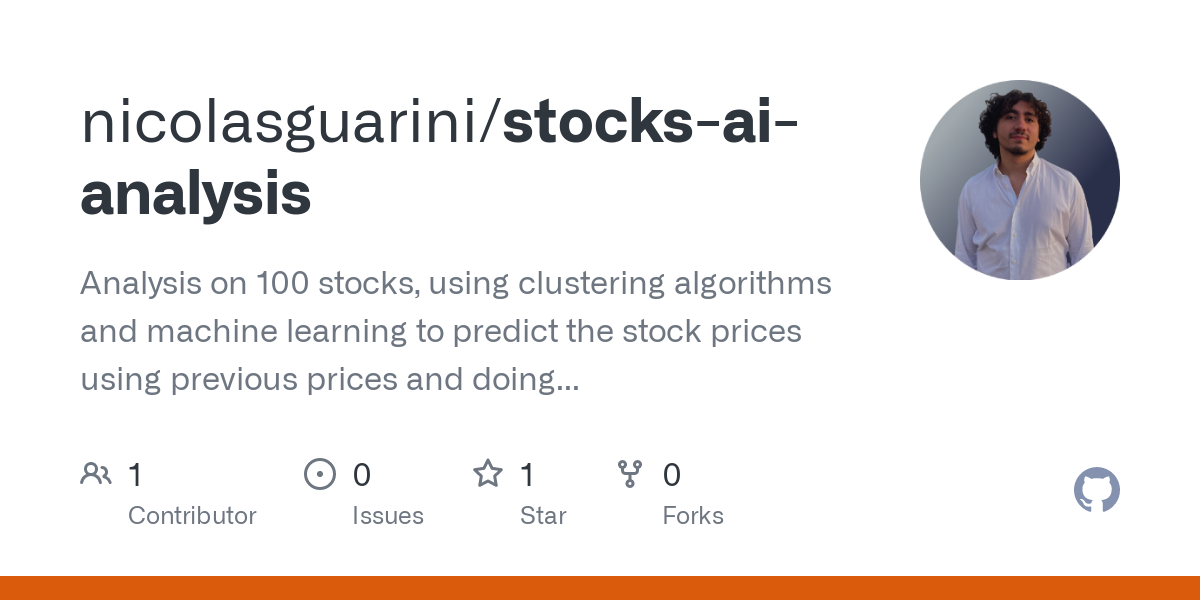20 Excellent Ideas For Deciding On Ai For Stock Markets
20 Excellent Ideas For Deciding On Ai For Stock Markets
Blog Article
Top 10 Strategies To Focusing On Risk Management When Trading Stocks That Are Ai, From Penny Stock To copyright
It is vital to manage the risk involved when trading AI stocks, especially in markets with high risks like cryptocurrencies and penny stocks. Here are ten tips for incorporating efficient risk management practices in your AI trading strategy:
1. Define Risk Tolerance
Tip - Establish a clear limit on the acceptable loss for each trade, per day and for the whole portfolio.
What's more, understanding your risk threshold can assist you set exact guidelines to your AI trading systems.
2. Automated Stop-Loss and Take Profit Orders
Tip Use AI to dynamically implement and adjust take-profit/stop-loss levels, in accordance with volatility.
Why? Automated safeguards minimize possible losses and help to lock in profits, without emotional intervention.
3. Diversify Your Portfolio
Tips: Spread your investment across different sectors, assets and markets (e.g. Mix penny stocks, large-cap stocks and copyright).
The reason: Diversification can help ensure that there is a balance between gains and losses through reducing the risk of any single asset.
4. Set Position Sizing Rules
Use AI to calculate the sizes of positions Based on:
Portfolio size.
Risk per transaction (e.g. 1 - 2% of the total value of portfolio).
Asset volatility.
Proper position sizing helps to prevent overexposure to high risk trades.
5. Monitor Variability and Adjust Strategies
Tips: Observe the market's volatility using indicators like the VIX (stocks) or data from on-chain (copyright).
The reason: Higher volatility demands stricter risk controls as well as more flexible trading strategies.
6. Backtest Risk Management Rules
Tip: In order to evaluate the effectiveness of risk control parameters, such as stop-loss limits and positions, you should include them in backtests.
What is the purpose of testing? Testing ensures that your risk-management measures are viable for different market conditions.
7. Implement Risk-Reward Ratios
TIP: Make sure that every trade has a suitable risk-reward relationship, such as a 1:1 ratio (risk $1 for $3 gain).
Why: Consistently utilizing beneficial ratios will increase your long-term earnings, despite periodic losses.
8. Make use of AI to detect anomalies and respond.
Create an anomaly detection program to identify unusual trading patterns.
It is possible to detect early and allow you to exit positions or modify strategies prior an important change in the market.
9. Hedging Strategies: Incorporate Hedging Strategies
To minimize risk, utilize hedge strategies, such as options or futures.
Penny Stocks: Hedging with sector ETFs or other related assets.
copyright: Protect your investments by investing in stablecoins (or an inverse ETF)
Why is it important to hedge against adverse changes in prices.
10. Continuously monitor and modify Risk Parameters
If the market conditions change it is important to review and adjust the risk settings in your AI trading system.
Why: Dynamic risk-management ensures that your strategy is applicable for different market situations.
Bonus: Use Risk Assessment Metrics
Tip: Evaluate your strategy using metrics like:
Maximum drawdown: the largest portfolio decline between trough and peak.
Sharpe Ratio: Risk-adjusted return.
Win-Loss Relative: Numbers of profitable trades compared to losses.
Why? These metrics provide a better understanding of the risk and reward of your strategy.
By implementing these tips to implement these tips, you can develop an effective risk management system that enhances the effectiveness and security of your AI trading strategies in penny stocks and copyright markets. Have a look at the best ai stock trading app recommendations for site advice including best ai stock trading bot free, ai investing, ai stock, trading ai, ai sports betting, ai stock market, ai investing, coincheckup, ai for copyright trading, ai in stock market and more. 
Top 10 Tips To Understand Ai Algorithms: Stock Pickers, Investments And Predictions
Knowing AI algorithms and stock pickers can assist you to evaluate their efficiency and alignment with your goals, and make the best investment decisions, regardless of whether you're investing in copyright or penny stocks. This article will offer 10 tips for how to better understand AI algorithms that predict stock prices and investment.
1. Machine Learning: Basics Explained
Tips: Learn the fundamental concepts of machine learning models (ML) including supervised, unsupervised, and reinforcement learning. These models are used for stock forecasting.
What are they? These techniques form the basis on which most AI stockpickers analyze historical data to formulate predictions. This can help you better comprehend the way AI operates.
2. Get familiar with common algorithms Used for Stock Picking
You can find out which machine learning algorithms are most widely used in stock selection by conducting research:
Linear Regression: Predicting trends in prices using the historical data.
Random Forest: using multiple decision trees to improve predictive accuracy.
Support Vector Machines SVMs: Classifying stock as "buy" (buy) or "sell" in the light of its features.
Neural Networks - Utilizing deep learning to identify patterns in market data that are complicated.
Why: Knowing the algorithms being used helps you understand what types of predictions the AI is making.
3. Explore the Feature selection and Engineering
TIP: Study the way in which the AI platform handles and selects features (data inputs) like indicators of market sentiment, technical indicators or financial ratios.
What is the reason? The relevance and quality of features significantly impact the performance of the AI. The AI's capacity to understand patterns and make profit-making predictions is dependent on the qualities of the features.
4. You can access Sentiment Analyzing Capabilities
Tips: Find out whether the AI uses natural language processing (NLP) and sentiment analysis to analyze unstructured data like tweets, news articles, or posts on social media.
Why: Sentiment Analysis helps AI stock analysts to gauge market sentiment. This is especially important for volatile markets like the penny stock market and copyright, where price changes can be influenced by news and shifting sentiment.
5. Understand the Role of Backtesting
Tips: Make sure the AI model uses extensive backtesting with data from the past to refine predictions.
Why is this? Backtesting allows us to determine how AIs would have been able to perform under previous market conditions. It gives insight into the algorithm's robustness and reliability, assuring that it is able to handle a range of market scenarios.
6. Evaluation of Risk Management Algorithms
Tips: Be aware of the AI's built-in risk-management features including stop-loss order size, position sizing, and drawdown limit limits.
Risk management is essential to avoid losses that can be significant particularly in volatile markets such as penny stock and copyright. The best trading strategies require algorithms to minimize risk.
7. Investigate Model Interpretability
Tips: Look for AI systems with transparency about the way they make their predictions (e.g. important features, decision tree).
What are the benefits of interpretable models? They assist you in understanding the motivations behind a specific stock's choice as well as the factors that led to the decision. This boosts confidence in AI recommendations.
8. Examine the Use and Reinforcement of Learning
Tip: Learn about reinforcement learning (RL) which is a subfield of machine learning, where the algorithm is taught through trial and error, and adjusts strategies in response to rewards and penalties.
Why: RL can be utilized in markets that are dynamic and constantly changing, like copyright. It is able to adapt and optimize the trading strategy based upon the feedback.
9. Consider Ensemble Learning Approaches
Tip: Check whether AI makes use of ensemble learning. This happens the case when multiple models (e.g. decision trees, neuronal networks, etc.)) are used to make predictions.
Why: Ensemble models increase prediction accuracy by combining the strengths of various algorithms. This decreases the chance of errors and improves the accuracy of stock-picking strategies.
10. Pay attention to the difference between Real-Time and. the use of historical data
Tip: Know whether the AI models rely on historical or real-time data when making predictions. A lot of AI stockpickers use both.
What is the reason? Real-time information, in particular on volatile markets like copyright, is essential for active trading strategies. Data from the past can help forecast patterns and price movements over the long term. It is ideal to have an equal amount of both.
Bonus: Learn about Algorithmic Bias and Overfitting
Tip: Be aware that AI models may be biased and overfitting occurs when the model is too closely to historical data. It is unable to generalize new market conditions.
Why: Bias or overfitting could alter AI predictions and cause low performance when paired with real-time market data. To be successful over the long term it is essential to make sure that the model is regularized and generalized.
If you are able to understand the AI algorithms employed in stock pickers and other stock pickers, you'll be better able to analyze their strengths and weaknesses, and suitability for your particular style of trading, whether you're focused on penny stocks, cryptocurrencies as well as other asset classes. This knowledge will enable you to make better informed decisions about AI platforms that are the most suitable for your strategy for investing. Follow the top rated ai stocks to invest in for website advice including ai stocks, ai sports betting, ai trade, ai trading software, ai for stock trading, ai penny stocks, stock analysis app, copyright ai bot, copyright ai trading, ai for stock market and more.